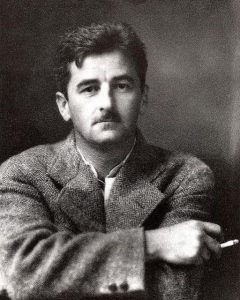 William Faulkner wrote The Sound and the Fury five separate times, “trying to tell the story, to rid myself of the dream.” “It began with a mental picture,” he told Jean Stein in 1956, “of the muddy seat of a little girl’s drawers in a pear tree.” He couldn’t seem to get it right, to find the picture’s grammar, or hear it. (According to Didion, “It tells you. You don’t tell it.”) This was part of the work, this getting it wrong—Faulkner believed failure was what kept writers going, and that if you ever could write something equal to your vision, you’d kill yourself.
William Faulkner wrote The Sound and the Fury five separate times, “trying to tell the story, to rid myself of the dream.” “It began with a mental picture,” he told Jean Stein in 1956, “of the muddy seat of a little girl’s drawers in a pear tree.” He couldn’t seem to get it right, to find the picture’s grammar, or hear it. (According to Didion, “It tells you. You don’t tell it.”) This was part of the work, this getting it wrong—Faulkner believed failure was what kept writers going, and that if you ever could write something equal to your vision, you’d kill yourself.